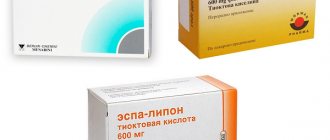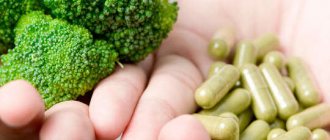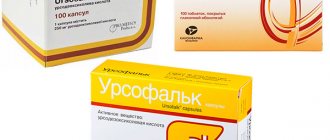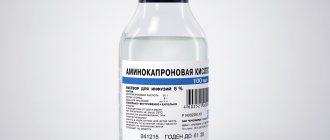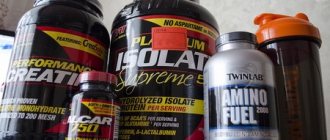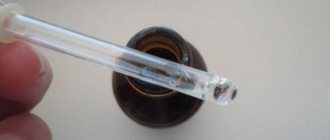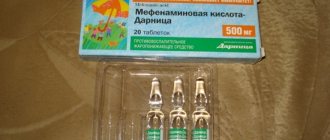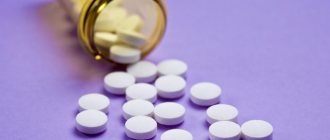This powder is yellowish in color, bitter in taste and with a specific odor; its appearance resembles hundreds of others known to chemistry. Meanwhile, possessing unique properties, he managed to win the respect of not only scientists and doctors, but also everyone who cares about their own health. For whom it is important to please the body with energy, protect brain cells and activate their work, speed up metabolism and maintain youth longer. So what is this special substance that can perform such miracles?
Chemical properties
What is alpha lipoic acid ? Thioctic acid also has the names thioctacid , lipoic acid . It is a vitamin-like substance, a cofactor of pyruvate dehydrogenase and alpha-ketoglutarate dehydrogenase complexes, and an antioxidant .
The substance is synthesized in the form of a light yellow crystalline bitter powder, which is insoluble in water, but highly soluble in ethanol. In medicines, a soluble form of a chemical compound is used - its sodium salt . The substance is found in large quantities in liver, spinach, kidneys and heart, and rice. The body is normally able to synthesize sufficient amounts of alpha lipoic acid . The medicine is produced in the form of a concentrate for infusion solution and intramuscular injection, in the form of film-coated tablets.
Alpha lipoic acid in bodybuilding
The substance is used by athletes to eliminate free radicals and reduce oxidation levels after training. The product slows down the processes of destruction of proteins and cells, speeds up recovery after training. The substance also accelerates and improves the absorption of glucose by muscles and stimulates the processes of glycogen .
It is also believed that the acid can be used as an effective fat burner.
Description of the product
Thioctic acid is a metabolic medicine. It helps remove harmful substances from the body. Preparations containing this substance are produced in the form of:
- ampoules;
- capsules;
- tablets;
- concentrate for making a solution.
The product improves blood microcirculation. It activates the process of cholesterol removal. The corresponding drugs are actively used in bodybuilding to enhance the effectiveness of sports activities. Thioctic acid is in demand in the field of cosmetology. It has found wide application in weight loss.
Pharmacodynamics and pharmacokinetics
Thioctic Acid is a coenzyme for the oxidative decarboxylation of pyruvic acid and various alpha-keto acids . cholesterol metabolism , and binds free radicals. Under the influence of the drug, liver function improves and glycogen . The effect of exogenous and endogenous toxins and alcohol is neutralized. In terms of its biochemical activity, the medicine is close to B vitamins .
When alpha-lipoic acid to solutions for intravenous administration (if the solutions are compatible), the severity of adverse drug reactions decreases.
After oral administration, preferably without food, the substance is completely and quickly absorbed from the digestive tract. Bioavailability reaches 30-60%, since the product undergoes presystemic biotransformation. The drug is oxidized in the liver tissue. Excreted via the kidneys. The half-life ranges from 20 minutes to an hour.
Thioctacid
Country of manufacture: Germany. The main component is Thioctic acid. Indications:
- neuropathy,
- liver diseases,
- atherosclerosis,
- intoxication of the body,
- problems with metabolism.
Produced in tablets of 600 mg or ampoules for injections of 25 mg/ml, this medicine is administered intravenously. When using tablets, Thioctic acid is absorbed better and injections are completely replaced.
Thioctacid is a complete analogue of Thiogamma and has the same pharmacological characteristics.
These are endogenous antioxidants that have a beneficial effect on metabolism. The drugs differ in some respects; Thioaccid has a minimal number of contraindications.
Side effects
The following side effects may develop:
- vomiting, diarrhea , nausea, abdominal pain, urticaria ;
- itching and rash , anaphylactic reactions , hypoglycemia ;
- headaches , hypoglycemia ;
- after rapid intravenous administration - breath holding, increased intracranial pressure , diplopia , convulsions , bleeding.
Overdose of the drug
In case of an overdose of the drug, the following complications may occur: headaches, vomiting, nausea. In severe intoxication, a generalized convulsive seizure is observed. In some situations, the patient may fall into a hypoglycemic coma.
In case of an overdose of lipoic acid, blood clotting is impaired, and acute necrosis in the skeletal muscle area may occur. There is no need to develop a specific antidote.
In case of drug overdose, symptomatic treatment is indicated. It is aimed at maintaining the functioning of vital organs. In emergency situations, hospitalization is indicated. In case of overdose, gastric lavage is performed. After this, the use of activated carbon is indicated. If seizures occur, anticonvulsant therapy is administered.
Thioctic acid, instructions for use (Method and dosage)
When prescribing the drug orally, it is used in a single dosage of 600 mg. The course of treatment is long, on average 3 months.
Instructions for alpha lipoic acid for injection
For severe polyneuropathy , 600 mg of the drug is administered intravenously, slowly, 50 mg per minute. The concentrate is diluted with sodium chloride . The frequency of administration is once a day. If necessary, the dose can be increased to 1.2 g per day. Duration of treatment is up to 4 weeks.
It is not recommended to administer more than 50 mg of the drug intramuscularly at a time. It is necessary to periodically change the injection site.
Alpha lipoic Evalar is taken according to the manufacturer's instructions.
Vitamin for sports
It is generally accepted that women are more interested in the benefits of vitamins and minerals. They, beauties and caring mothers, are destined by their “status” to be aware of everything that has a positive effect on the beauty and health of the family. This is only a half-truth. Information about the benefits of vitamins and microelements is just as important for men, especially those who see themselves in sports and, in particular, in bodybuilding. For them, who regularly lose energy in the gym, it is especially important to know what microelements and how to take them to gain muscle mass.
Athletes know that vitamin N is the “king” among useful substances. Under its influence, fat melts before our eyes, and muscles gain mass day after day. And at the same time - no feeling of fatigue or weakness.
The rate of lipoic acid intake for athletes may vary depending on the load and type of training.
Speed-strength exercises require 100-200 mg of vitamin N per day. During competitions – 150-250 mg daily. Endurance training includes a vitamin menu of 400-500 mg, during competitions - 450-600 mg/day.
In some cases, the intake of lipoic acid is determined by a specially designed program. In this case, at the initial stage, you should drink vitamin N in doses not exceeding 100-200 mg/day, eventually increasing to 400-600 mg per day. The daily portion should be divided into equal shares and drunk three times a day. But sports nutritionists do not recommend going beyond the 600-milligram maximum. This is the upper limit of the vitamin portion for athletes. Increasing this dose will not have any effect on either fat burning or muscle building.
Sometimes the question arises as to what can replace vitamin N in a sports diet. Conjugated linoleic acid is similar in the principles of its effect on the body of athletes. It, being nothing more than a partially modified form of lipoic acid, also regulates the ratio of fat and muscle tissue, reducing sebaceous deposits on the abdomen and enhancing muscle growth.
Interaction
The medicine reduces the effectiveness of cisplatin and enhances the effect of oral hypoglycemic drugs and insulin .
The substance cannot be mixed in the same container with dextrose , Ringer's solution , ethanol, and solutions that react with SH groups and disulfide bridges.
The product enhances the effect of taking carnitine .
Ethanol and medications containing ethyl alcohol weaken the effect of taking acid.
Berlition
Indications:
- diabetic polyneuropathy,
- osteochondrosis.
German production, the properties of which largely coincide with Thioctacid. It is prescribed for liver problems, protects the organ from toxins, acts as an antioxidant, and neutralizes the symptoms of heavy metal poisoning. The consequences of the occurrence of atherosclerotic plaques in blood vessels are also eliminated. Berlition helps control the amount of glucose and lipids.
Release form:
- 300 mg tablets,
- concentrated substance for preparing a solution in ampoules of 300 and 600 mg.
Some patients experience dyspeptic complications or allergies in the form of side effects, sometimes intracranial pressure increases, and the temperature rises.
Preparations containing (Thioctic Acid Analogues)
Level 4 ATX code matches:
Verona
Phibs
Gastrikumel
Fitogastrol
Thyroidea Compositum
Berlition
Thiolepta
Gastric collection
Espa-Lipon
Brewer's yeast
Lipoic acid
Rosehip syrup
Omez DSR
Octolipen
Thioctacid
Thiogamma
Figurin
There are a lot of drugs for oral and injection use based on Thioctic Acid.
Common analogues of the product: Berlition 300 , Octolipen , Thioctacid BV , Thiolepta , Thiolipon , Lipothioxone , Thioctic acid-Vial , Thiogamma , Espa-Lipon , Neurolipon and so on.
In combination with cocarboxylase and riboflavin, the substance is part of the preparations Korilip-Neo and Korilip .
Multicomponent preparations: Turboslim , Bio-Max , Selmevit Intensive , Complivit Trimester (1st trimester, 2nd trimester and 3rd trimester).
Benefits for weight loss
The product is used for weight loss. It helps speed up metabolic processes. The metabolic drug is easily absorbed. This is due to the fact that it is not of synthetic, but of natural origin. Thioctic acid helps reduce hunger. It provides the body with additional energy and facilitates the process of glucose absorption.
Thioctic acid helps reduce blood glucose levels. It can slow down the process of fat accumulation in the liver area.
Reviews
Reviews from doctors about alpha lipoic acid are mostly positive. The medicine is quite safe to use, rarely causes adverse reactions (when administered intravenously in large doses), patients tolerate it well, and the medicine is often prescribed as part of complex treatment in combination with other vitamins and medications.
There are a lot of reviews about Thioctic Acid for weight loss:
- “... I recently took a course of the drug. I followed a diet and exercised. I’ve lost weight, I’m very happy with everything”;
- “... Even as a child, a doctor prescribed this acid to me for the treatment of dyskinesia, and since then there have been almost no problems with gallstones. But sometimes I take this substance for prevention. I feel great”;
- “... After the course I always lose a couple of kilograms, I feel such lightness in my body, I no longer want to eat fatty and sweet foods”;
- “... I took the full course, spent money and time, went to shaping as usual, but didn’t see any results. Just a waste of money”;
- “... It’s good, of course, that the medicine is inexpensive and I didn’t have any adverse reactions from it, it’s a vitamin after all. But I can’t say that I actually lost weight because of it. The weight remained the same.”
Thiogamma
The tablets are manufactured in Germany, the main active ingredient is thioctic acid. Additional substances:
- simethicone,
- lactose,
- monohydrate,
- silica.
The medicine is prescribed for liver pathologies and damage to nerve fibers due to diabetes or alcohol. The drug improves the absorption of insulin by cells and corrects cholesterol levels in the blood. It should not be used by pregnant women, patients with myocardial infarction, gastrointestinal diseases, heart or liver problems.
Foods rich in lipoic acid
If there is a lack of thioctic acid in the body or for prevention purposes, you can enrich your daily diet with the following foods:
- rice;
- spinach;
- broccoli;
- White cabbage;
- cow's milk;
- beef (especially liver);
- meat by-products, such as liver, heart, kidneys.
The substance is found in smaller quantities in greens, yeast, beans, vegetables and fruits.
Contraindications
The list of contraindications to this drug includes:
- lactose intolerance or deficiency;
- galactose and glucose malabsorption;
- lactation, pregnancy;
- age less than 18 years;
- high sensitivity to components.
Intravenous administration of the drug should be carried out with caution in people over 75 years of age.
How exactly does acid affect the human body?
- Reduces activity and promotes the release of toxins , heavy metals and other debris accumulated in tissues.
- Accelerates the processing of sugar molecules.
- Activates metabolism , helps mitochondria - energy-producing organelles - quickly extract the latter from food.
- Promotes improved recovery of damaged organs or tissues.
- Dulls the feeling of hunger.
- Helps the liver not become fat.

